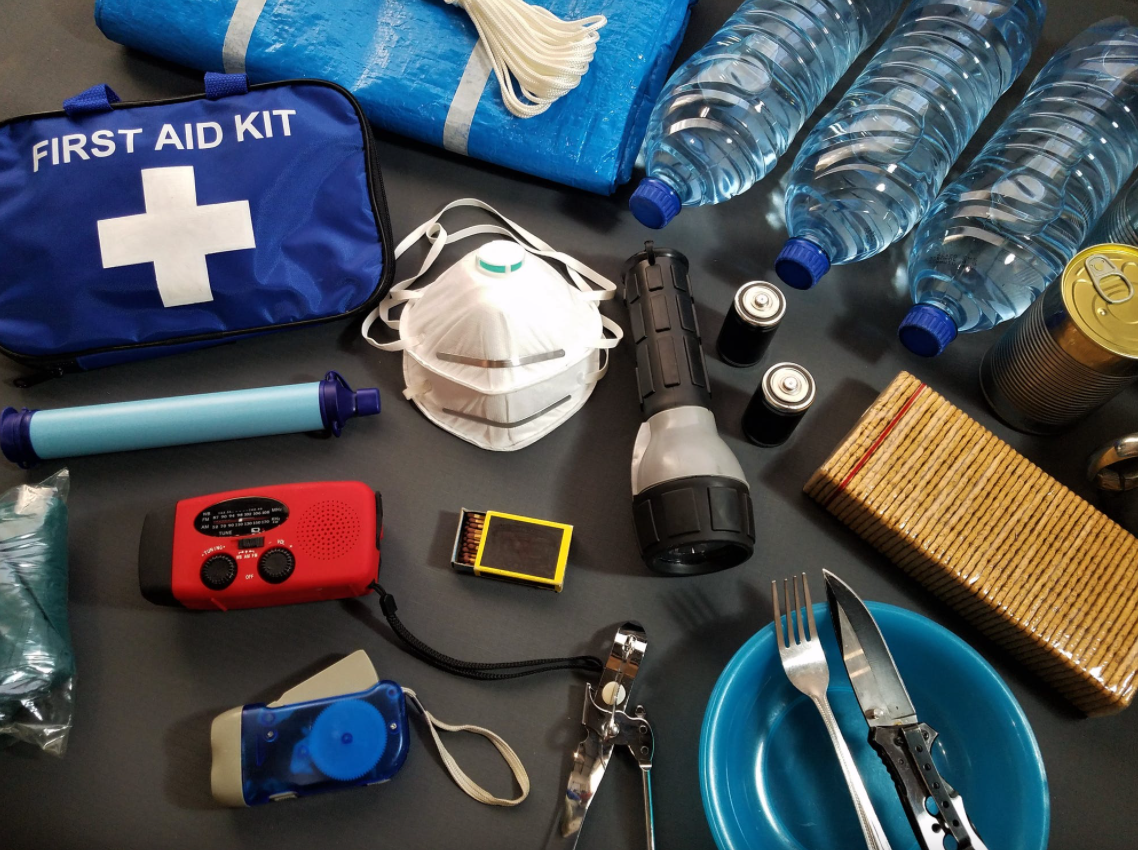A well-stocked first aid kit is one of the most important things to have at home!
 Photo by: Pexels
Photo by: Pexels
A cut when chopping an onion or a bruise from bumping your knee: these little accidents at home can happen even with the greatest care. So you need to be prepared for them with a well-stocked first aid kit. In addition to increasing home security and keeping a kit at home, you can also have one in your car. This enables you to react quickly and effectively to frequent injuries and minor emergencies. You can easily buy first aid kits from drugstores or put them together for your family. The latter option allows you to customize your kit to suit your family's specific needs and activities, but remember to include essential items for various emergency situations.
primary care
When customizing your own first aid kit, be sure to pack the basics. These are items that can be used to treat minor injuries such as cuts, wounds, and burns that are common in most households.
- Elastic bandages of various sizes – These are used to cover, protect, and bandage cuts and wounds.
- Sterile Gauze and Tapes – Gauze comes in a variety of sizes for covering wounds and cuts, but the four inches wide are the most versatile. The tape is used to hold the gauze or bandage in place.
- Rubbing alcohol – It comes in very handy when you need to disinfect affected skin or clean your hands before giving first aid.
- Cotton balls and swabs – These can be used for cleaning and washing wounds, as well as applying medication.
- Antiseptic Solution or Cream – These are intended for cleaning wounds and cuts, but can also be used to prevent infection.
- Burn ointment – use this to treat minor burns and prevent infection.
- Eye wash solution – This is used to wash and rinse the eyes.
- Sterile Saline Solution – It helps cleanse wounds before antiseptics are applied and covered with a bandage.
- Scissors and Tweezers – Scissors are used to cut gauze and bandages, while the tweezers help remove foreign matter from the skin.
- Latex gloves – These can be used when handling people to prevent contamination and infection. It's best to have at least a couple of pairs.
Other first aid items
In addition to the essential items, you can also include these additional items as well as medicines for common ailments.
- First Aid Manual – This can be very useful in an emergency while you are waiting for medical help.
- Hot / cold pack – you can use this for muscle aches and pains.
- Medicated oil – This can help relieve dizziness and nasal congestion.
- Hand sanitizer or antiseptic hand wash – These can help keep your hands clean when soap and water are not available.
- Triangle Brace – It supports an injured arm.
- Thermometer – Use this when you need to take body temperature.
- Tourniquet – In case you need to stop blood loss, you can use it to apply pressure around a bleeding limb.
- Emergency Numbers – Make sure you include your GP and local emergency services contact information.
Medication:
- Calamine lotion
- Hydrocortisone cream
- Pain relievers such as acetaminophen
- Antacids
- Antihistamine
- Medicines for coughs and colds
- Medication for diarrhea
Use caution when taking or administering any medication, whether for topical or oral use, as some people may be allergic to them. Check with your doctor about possible sensitivities in your family and ask house guests about possible allergies before undergoing first aid treatment. Households with young children should receive medication approved by their pediatricians, while households with older relatives may need instruments such as a blood pressure monitor and glucose meter.
Accessible and safe storage
Aside from having a comprehensive kit, you also need to make sure that you have easy access to these supplies in an emergency. It's best to keep them in a central location like your home bathroom or kitchen cabinet and your car's glove compartment. If you keep your first aid kit in an accessible place, everyone in your household can access it at all times.
This can be a safety issue if you have children as they can tamper with the contents of the kit. To prevent young children from inadvertently taking certain medications, keep your first aid kit in a safe place out of their reach, such as in the office. B. on a high shelf. If you have older children, educate them about the importance of the kit and give them instructions on what to do in an emergency so they are prepared. Make it clear to children that the items in the kit are not toys and that they cannot take any medication without adult supervision. They can even explain why some medicinal items are not for human consumption and theirs by the Dangers of drinking alcohol.
Since you really don't know when you will encounter an emergency situation, it is good to be prepared with a fully stocked kit. Regularly check the contents and replace consumables that have expired or used up. Combine this with proper first aid training and you can potentially help save the lives of loved ones and others.




